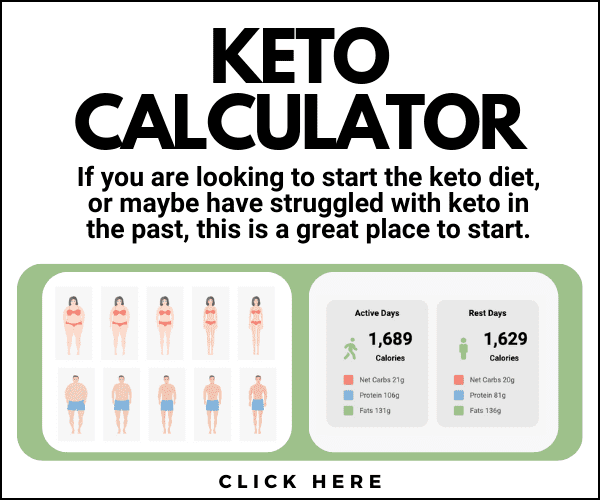Ketosis vs. Ketoacidosis: Understanding the Differences

Introduction to Ketosis vs. Ketoacidosis
Historically, ketosis is one of the most vaguely defined and poorly understood concepts of the last century. There are different scenarios in which our body can be in a state of either ketosis vs. ketoacidosis.
The most basic definition of ketosis is a general increase in blood levels of ketone bodies to 0.5 mmol or above. However, the reasons for the development of ketosis, the resultant levels of blood ketones, and the associated outcomes (health versus possible death) differ drastically between different situations of ketosis. Failure to understand the differences between various incidents of ketosis has led to the common misconceptions we have today that ultimately has made educating the masses on the ketogenic diet difficult.
The single most important take-home from this article should be that diabetic ketoacidosis is not the same as the ketosis experienced from a ketogenic diet.
Diabetic Ketoacidosis
Whenever I speak about ketogenic dieting, almost inevitably I am asked the question: “But shouldn’t you be worried about going into a state of ketoacidosis?”
Ketoacidosis occurs when the formation of ketone bodies is uncontrolled (15–25 mmol) and acidity in the blood increases. [1] It is important to understand that our body regulates blood acid concentrations tightly. We typically measure blood acidity vs. alkalinity using the pH scale. If your blood’s pH is less than 7 it is acidic, and if greater it is basic, or alkaline. Our blood is usually slightly alkaline with a pH ranging from 7.35 to 7.45. Any deviation up or down from the norm by even the smallest amount can prove fatal!

When it comes to ketosis vs ketoacidosis, the most common form of ketoacidosis to occur is known as diabetic ketoacidosis. This usually occurs in type I diabetics but can also occur in type II diabetics. Recall that type I diabetes occurs when the pancreas does not produce insulin, while type II occurs when the cells in the body are resistant to insulin and the pancreas produces inadequate amounts.
Role of Insulin in Ketoacidosis
Insulin’s job is to take glucose into the cell to be utilized for energy. Insulin also keeps fat metabolism in check and prevents the formation of ketone bodies in a healthy individual. During starvation or low-carbohydrate diets, insulin lowers but is not absent, and thus, insulin sensitivity improves. However, when insulin is completely absent, or the cells are resistant to the hormone’s effects, glucose is not taken up into cells and cannot be used. Under these conditions, blood glucose levels skyrocket from a normal 80-100 mg/dl fasting to levels greater than 200 mg/dl! Many scientists have referred to this as “starvation in the face of plenty.”
When cells are starved of glucose and insulin is low, the liver increases the activity of a process known as gluconeogenesis. This process occurs by breaking down protein and muscle tissue and turning it into glucose. At the same time, fatty acid breakdown is uncontrolled, and cells begin using fatty acids as fuel at very high rates. Under these conditions, ketones are formed from the incomplete breakdown of fatty acids at an uncontrolled rate.
To compound this situation, the concentration of glucose is far too high for the kidneys to reabsorb, resulting in a loss of the fluid portion of the blood to the urine. The result is lower blood volume that is highly concentrated in ketone bodies/keto acids. These uncontrolled and extremely high concentrations exceed the body’s ability to buffer the acidity, causing an individual to enter into the state of ketoacidosis, which must be treated immediately.
Diet-Induced Ketosis
Over 100 years ago (1915), Dr. Benedict published a landmark paper on fasting and fuel utilization. He realized that our bodies’ stored form of carbohydrate (glycogen) is extremely limited (only 400 calories in the liver). Research had also made it clear that our brain is highly dependent on glucose for fuel. [2] Thus it was believed that after glycogen ran out, we would be primarily sustained by breaking down our muscle tissue and then organs at an accelerated rate in an effort to convert bodily protein to glucose. [3] The result would be sustained glucose for our brains at the expense of our body’s other vital tissues.
At around the mid-1950s, researchers implemented protocols in which they used fasting as a method to treat obesity. [4] A resultant surge of studies was conducted to investigate the impact of fasting on fuel utilization. During this time, Dr. George Cahill and colleagues (1966), perhaps the most famous researchers in fasting-induced ketosis, began to question the reasoning that the brain’s function depended primarily on glucose in a fasted state. Cahill further reasoned that survival under conditions of fasting would be limited to 10 and a maximum of 18 days. Humans could clearly survive longer than this, and thus Dr. Cahill sought an alternative explanation in his research.
Ketosis Study Results
In a classic study in 1966, Dr. Cahill fasted 6 students for 8 days. He found that glucose fell from around 80 mg/dl to 65 mg/dl by day 3 and was sustained at this level for the remaining 5 days of the study. However, on days three and eight, subjects’ blood ketone levels (beta-hydoxybutyrate) had risen to 1.6 and 4.2 mmol respectively without a decline in blood pH! These changes were paralleled by insulin levels being cut in half but not disappearing entirely as is seen in diabetes. Cahill’s (1966) research provided a viable option for an alternative fuel source for glucose. However, this had to be confirmed with future research!
The following research was conducted on a very intelligent nurse who happened to be overweight (approximately 280 lbs.). For fear of heart failure, she entered into a 6-week starvation study that was headed up by a researcher in Dr. Cahill’s lab named Dr. Owen. When asked why Dr. Owen put her on a six-week diet he answered that “Jesus fasted forty days and forty nights, and afterward he hungered” (Matthew 4:2). These researchers found that two-thirds of the fuel for her brain was derived from ketones!
Carbohydrate-Restricted Ketosis
Another form of ketosis includes non-starvation, diet-induced ketosis, which overall produces a moderate level of blood ketones. In order to induce such a state, the typical macronutrient breakdown of a well-formulated diet includes >70 % fat, ~20–25% protein, and less than 5–10 % carbohydrate in the diet. For example, Ballard [5] found that 6 weeks of ketogenic dieting with a 400 calorie deficit in individuals with cardiovascular risk factors and high cholesterol only raised plasma BHB levels to an average of 0.5 mmol. Even with the strictest ketogenic diets, ketone levels tend to not rise above 5-7 mmol. [6]
Ketosis vs. Ketoacidosis: Summary and Practical Application

This article defined ketosis as a general increase in blood ketone levels typically above 0.5 mmol. Early research on diabetics found that when the disease state is left untreated, blood ketone levels rise to levels greater than 15 mmol (ketoacidosis). This led researchers to believe that ketones were a toxic byproduct of metabolic dysfunction and disease. However, research from starvation studies and ketogenic dieting has shown that ketones are a high-powered energy source that can replace glucose as a dominant source for the brain and central nervous system as a whole.
In general, when ketogenic dieting, blood ketones typically raise to 0.5 mmol to 7 mmol. When calorie restriction is extreme, or when individuals fast for several days, blood levels of ketones generally do not rise above 7 mmol. In these situations, ketones serve as a fuel source, spare muscle mass, and do not change blood acid levels (pH). Thus, diet-induced ketosis is a safe, therapeutic state which protects our bodies from muscle wasting and allows them to maintain optimal function during states of carbohydrate and calorie restriction, which is far different than ketoacidosis.
FAQs about Ketosis Vs. Ketoacidosis
When does ketosis turn to ketoacidosis?
Ketoacidosis occurs when the formation of ketone bodies is uncontrolled (15–25 mmol) and acidity in the blood increases. In general, when ketogenic dieting, blood ketones typically raise to between 0.5 mmol and 7 mmol. Diet-induced ketosis is a safe, therapeutic state which allows our bodies to maintain optimal function during states of carbohydrate and calorie restriction, which is far different than ketoacidosis.
How do you get ketoacidosis?
When insulin is completely absent, or the cells are resistant to the hormone’s effects, glucose is not taken up into cells and cannot be used. As a result, the liver breaks down protein and muscle tissue and turns it into glucose. At the same time, cells begin using fatty acids as fuel at very high rates. Under these conditions, ketones are formed from the incomplete breakdown of fatty acids at an uncontrolled rate.
To compound this situation, the concentration of glucose is too high for the kidneys to reabsorb, resulting in a loss of the fluid portion of the blood to urine. The resulting lower blood volume has high concentrations of ketone bodies/keto acids. These extremely high concentrations of ketones exceed the body’s ability to buffer the acidity, causing an individual to enter into the state of ketoacidosis, which must be treated immediately.
References
Owen, O. E. (2005). Ketone bodies as a fuel for the brain during starvation. Biochemistry and molecular biology education, 33(4), 246-251.
Cahill Jr, G. F. (2006). Fuel metabolism in starvation. Annu. Rev. Nutr., 26, 1-22.
Cahill, G. F., Herrera, M. G., Morgan, A., Soeldner, J. S., Steinke, J., Levy, P. L., … & Kipnis, D. M. (1966). Hormone-fuel interrelationships during fasting. The Journal of clinical investigation, 45(11), 1751-1769.
Ballard, K. D., Quann, E. E., Kupchak, B. R., Volk, B. M., Kawiecki, D. M., Fernandez, M. L., … & Volek, J. S. (2013). Dietary carbohydrate restriction improves insulin sensitivity, blood pressure, microvascular function, and cellular adhesion markers in individuals taking statins. Nutrition research, 33(11), 905-912.
Veech, R. L. (2004). The therapeutic implications of ketone bodies: the effects of ketone bodies in pathological conditions: ketosis, ketogenic diet, redox states, insulin resistance, and mitochondrial metabolism. Prostaglandins, leukotrienes and essential fatty acids, 70(3), 309-319.
Cartwright, M. M., Hajja, W., Al-Khatib, S., Hazeghazam, M., Sreedhar, D., Li, R. N., … & Carlson, R. W. (2012). Toxigenic and metabolic causes of ketosis and ketoacidotic syndromes. Critical care clinics, 28(4), 601-631.











Hello!
Great article.
My question is: How long is it advisable to carry out ketogenic diet?
Thanks!
Currently there hasn’t been any studies looking at this so it is hard to say but it appears to be safe in the longer studies that are out.